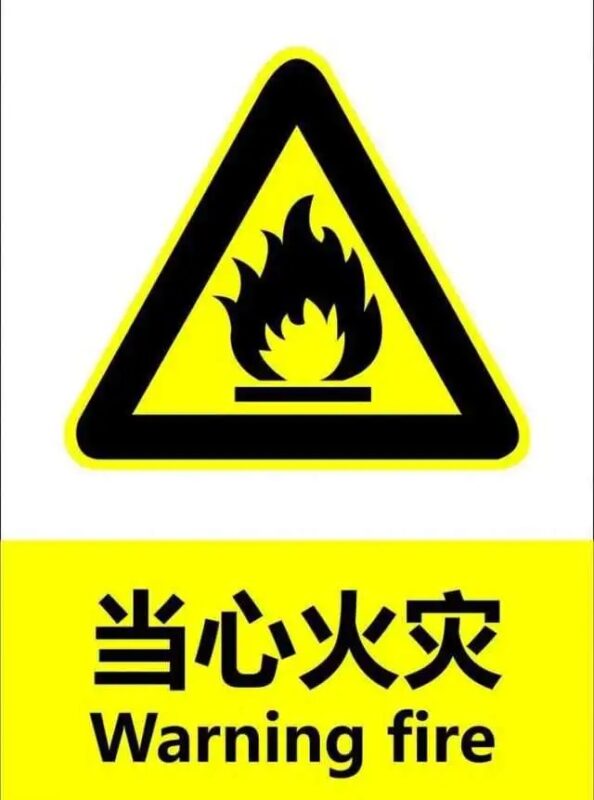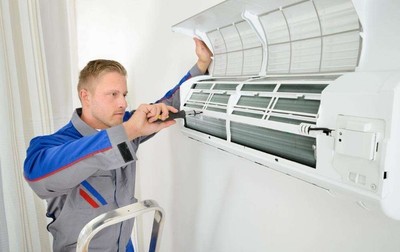Concept introduction
The working medium that completes the thermal cycle in a refrigerator. It absorbs the heat of the object being cooled at low temperatures and then transfers it to cooling water or air at higher temperatures. In the vapor compression refrigerator, the working medium that can be liquefied at room temperature or lower temperature is the refrigerant, such as freon (fluorine, chlorine, bromine derivatives of saturated hydrocarbons), azeotropic mixing medium (azeotropic solution mixed by two kinds of freon in a certain proportion), hydrocarbons (propane, ethylene, etc.), ammonia, etc.; In a gas compression refrigerator, gas refrigerants such as air, hydrogen, helium, etc. are used, and these gases are always gaseous in the refrigeration cycle; In absorption chillers, a binary solution consisting of an absorbent and a refrigerant is used as a working medium, such as ammonia and water, lithium bromide (molecular formula: LiBr). White cubic crystalline or granular powder, easily soluble in water) and water, etc.; Steam jet chillers use water as refrigerant. The main technical indicators of refrigerant are saturated vapor pressure, specific heat, viscosity, thermal conductivity, surface tension and so on. After 1960, people have done a lot of experimental research on the application of non-azeotropic mixing fluid, and it has been used in the liquefaction and separation of natural gas. Low evaporation temperature can be obtained by single stage compression of non-azeotropic mixing medium, and cooling capacity can be increased and power consumption can be reduced. Its nature is directly related to the refrigeration effect, economy, safety and operation management of refrigeration equipment, so the understanding of refrigerant property requirements can not be ignored.

Jeopardize
Ozone layer depletion
In February 1985, J.Farman, leader of the British Antarctic Expedition, first reported that since 1977, the total amount of ozone over Antarctica began to rapidly reduce by about half in late September each year, forming a “ozone hole” that continued to gradually recover in November, causing worldwide shock.
Ozone-depleting compounds, in addition to snow seeds, are also used as aerosol propellants, blowing agents, and cleaning agents in the production of electronic devices. Long-lived brominated compounds, such as Haion, also contribute significantly to ozone depletion.
Both chlorine atoms and nitric oxide (NO) can react with ozone and CFCs are being mass-produced and used worldwide due to refrigerants
Its chemical stability is good (such as CFC12 atmospheric life of 102 years) is not easy to decompose in the troposphere, through the atmospheric circulation into the stratosphere where the ozone layer is located, under the irradiation of short-wave ultraviolet UV-C, decompose CI free radicals, participate in the consumption of ozone.
To sum up, in order for ozone to be depleted, the substance must have two characteristics: chlorine, bromine, or another similar atom involved in the chemical reaction that turns ozone into oxygen; It must be very stable in the lower atmosphere (i.e. have a long enough atmospheric lifetime) for it to reach the ozone layer. For example, hydrochlorofluorocarbons (HCF22) and HCFC123 have a chlorine atom, which can consume ozone, and their atmospheric life is 12.1 and 14 years, respectively, and chlorine atoms are relatively active, can decompose in the lower atmosphere, and the number of ozone layer is not much. Therefore, HCFC22 and HCFC123 have much less ozone-destroying capacity than CFCs.

Nature requirement
1. It has excellent thermodynamic characteristics so that it can operate in a given temperature region with high cycle efficiency. The specific requirements are: the critical temperature is higher than the condensing temperature, the saturation pressure corresponding to the condensing temperature is not too high, the standard boiling point is low, the specific heat capacity of the fluid is small, and the refrigerant,Low adiabatic index, large heat per unit volume, etc.
2.The specific requirements for excellent thermophysical properties are: higher heat transfer coefficient, lower viscosity and smaller density.
3.Good chemical stability requires that the working medium has good chemical stability at high temperatures to ensure that the working medium does not decompose at the highest working temperature.
4. Good miscibility with lubricating oil
5.Safety working medium should be non-toxic, non-irritating, non-combustible and explosive.
6. Good electrical insulation
7.Economy requires low working medium and easy access.
8. Environmental protection requires that the ozone depletion potential (ODP) and global warming potential (GWP) of the working medium be as small as possible to reduce the destruction of the atmospheric ozone layer and cause global warming.

How do I fill an air conditioner with refrigerant
1, open the air conditioning to the cooling mode, and the temperature is turned on to the lowest, the wind speed is turned on to the maximum, which helps the compressor to start quickly
2, the fluorine pipe is connected to the fluorine bottle, the pressure gauge is slightly opened, so that the air in the pipe can be emptied,
3, the wrench removed the fluorine pipe safety screw of the external machine, “thin pipe is a liquid pipe, fluorination is added in the thick pipe, that is, the gas pipe”, and then connected to the fluorine tube on the fluorine bottle,
4, when filling fluorine, the cause of atmospheric temperature should be fully considered, the temperature is high, the fluorine pressure is controlled at 5 pressures, and the temperature is lower than 30° and higher than 20° can be controlled at 4.5 pressures.
5. Remove the connecting pipe, tighten the safety screws on the copper pipe, and check the refrigeration effect after fluoride filling.

